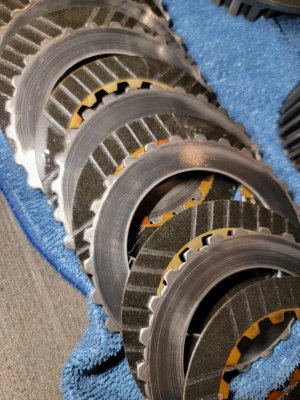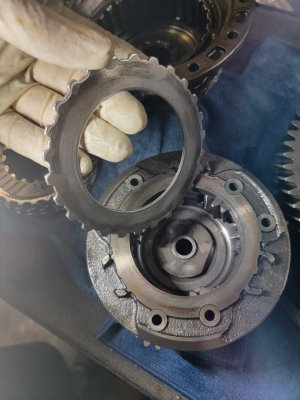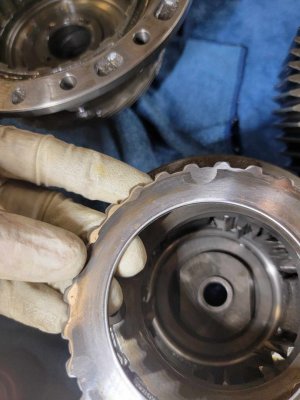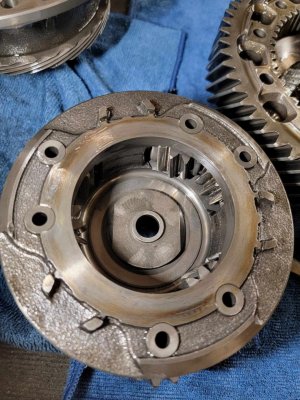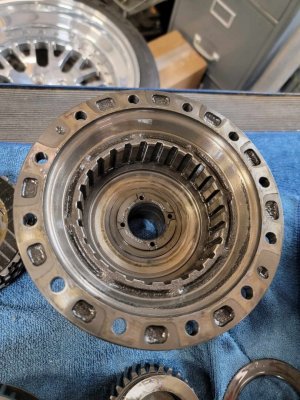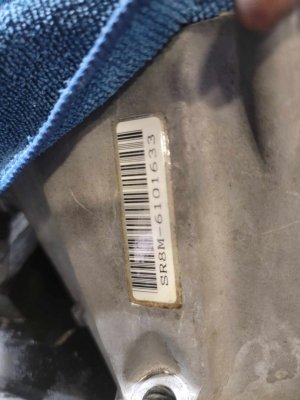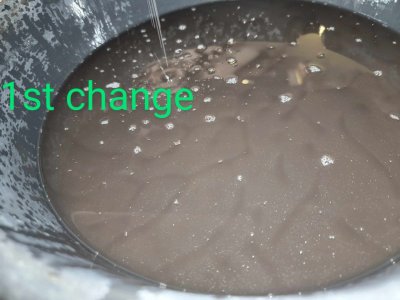Noise on turning (video)
- Thread starter cdscivic
- Start date
I am confused. Most 'other' LSDs transition from an open like differential towards a closed differential as the inside wheel looses traction in a turn which allows you to continue to apply torque to the outside wheel .
If you start to get inside wheel spin your description kind of implies that the differential transitions to an open differential. An open differential can only apply as much torque to the non spinning wheel as it is applying to the spinning wheel which is not a lot, so that does not seem like the hot ticket for increasing your turn exit time by 10%.the wheels start out locked and the helical cut gears gradually apply a side load during cornering that eventually compresses the spring plate to release the clutch pack, allowing the wheels to turn independently like in an open diff.
I need to get more sleep- I wrote it wrong.I am confused. Most 'other' LSDs transition from an open like differential towards a closed differential as the inside wheel looses traction in a turn which allows you to continue to apply torque to the outside wheel .
If you start to get inside wheel spin your description kind of implies that the differential transitions to an open differential. An open differential can only apply as much torque to the non spinning wheel as it is applying to the spinning wheel which is not a lot, so that does not seem like the hot ticket for increasing your turn exit time by 10%.
- Joined
- 26 March 2023
- Messages
- 80
Ok , the mechanic has taken the transmission out and sent me some pictures. I have attached them here. We are at a loss at this time.  Any help is appreciated.
Any help is appreciated.
Notes:
*Nothing that jumps out other than the fluid being black (diff fluid?)
*Axles are fine on removal
*Nothing appears loose or broken
*Gears / bearings / synchros look alright
Question:
Is there a supposed to be a snap ring inside the differential housing?
Notes:
*Nothing that jumps out other than the fluid being black (diff fluid?)
*Axles are fine on removal
*Nothing appears loose or broken
*Gears / bearings / synchros look alright
Question:
Is there a supposed to be a snap ring inside the differential housing?
Attachments
-
 Nsx1.jpg49.8 KB · Views: 14
Nsx1.jpg49.8 KB · Views: 14 -
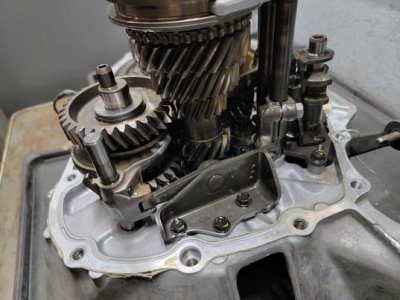 Nsx2.jpg41.1 KB · Views: 9
Nsx2.jpg41.1 KB · Views: 9 -
 Nsx3.jpg27.4 KB · Views: 6
Nsx3.jpg27.4 KB · Views: 6 -
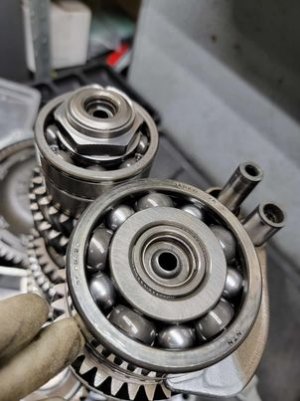 Nsx4.jpg25.4 KB · Views: 5
Nsx4.jpg25.4 KB · Views: 5 -
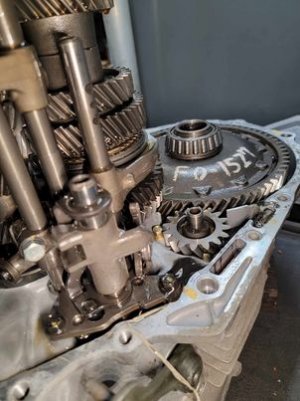 Nsx5.jpg28.3 KB · Views: 6
Nsx5.jpg28.3 KB · Views: 6 -
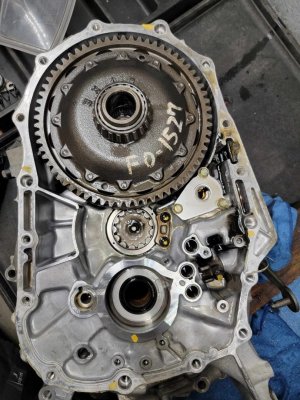 Nsx6.jpg230.3 KB · Views: 5
Nsx6.jpg230.3 KB · Views: 5 -
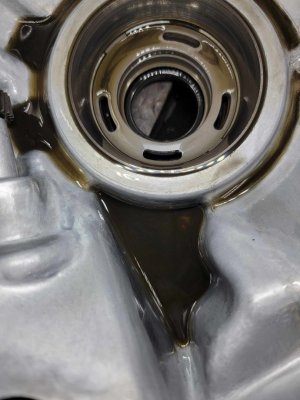 Nsx9.jpg135.8 KB · Views: 4
Nsx9.jpg135.8 KB · Views: 4 -
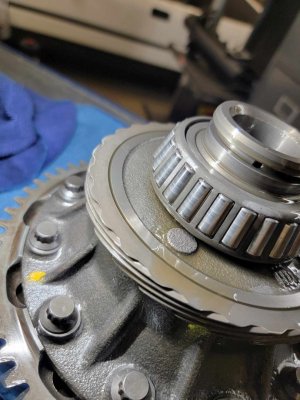 Nsx8.jpg163.3 KB · Views: 4
Nsx8.jpg163.3 KB · Views: 4 -
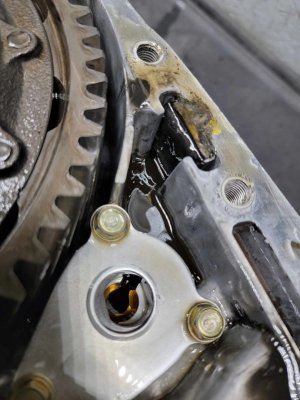 Nsx7.jpg141 KB · Views: 4
Nsx7.jpg141 KB · Views: 4 -
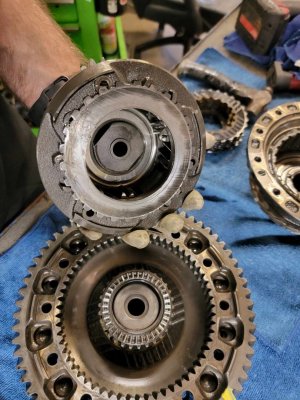 Nsx10.jpg202.5 KB · Views: 6
Nsx10.jpg202.5 KB · Views: 6 -
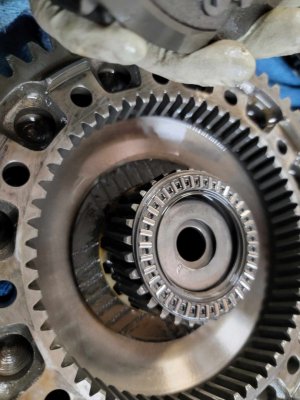 Nsx11.jpg135 KB · Views: 5
Nsx11.jpg135 KB · Views: 5 -
 Nsx12.jpg218 KB · Views: 5
Nsx12.jpg218 KB · Views: 5 -
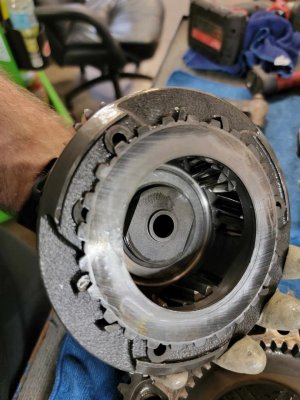 Nsx13.jpg159.1 KB · Views: 5
Nsx13.jpg159.1 KB · Views: 5 -
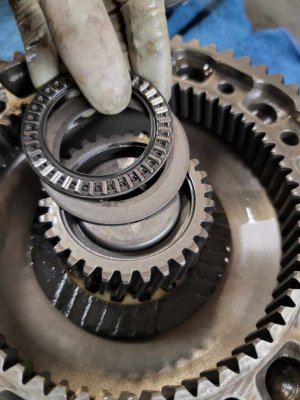 Nsx14.jpg147.9 KB · Views: 4
Nsx14.jpg147.9 KB · Views: 4 -
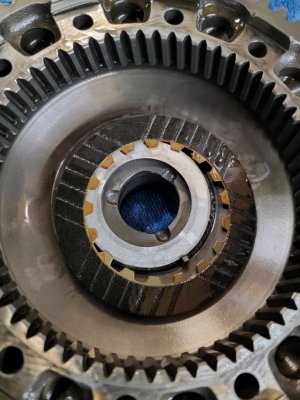 Nsx15.jpg177.8 KB · Views: 4
Nsx15.jpg177.8 KB · Views: 4 -
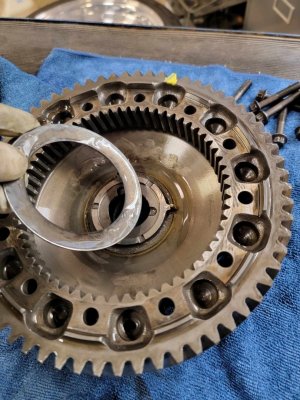 Nsx16.jpg210.8 KB · Views: 5
Nsx16.jpg210.8 KB · Views: 5 -
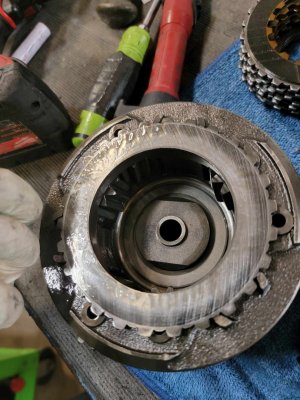 Nsx19.jpg186.3 KB · Views: 6
Nsx19.jpg186.3 KB · Views: 6 -
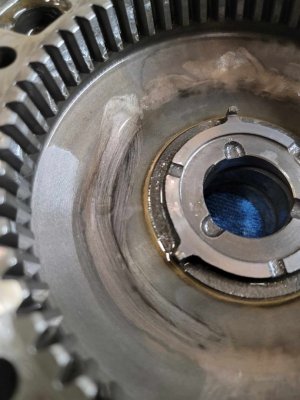 Nsx18.jpg143 KB · Views: 6
Nsx18.jpg143 KB · Views: 6 -
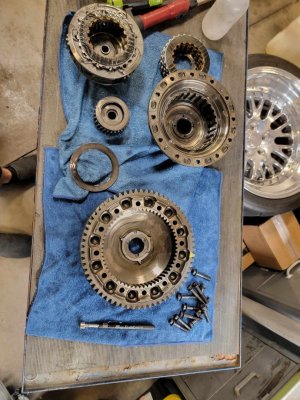 Nsx17.jpg249 KB · Views: 6
Nsx17.jpg249 KB · Views: 6 -
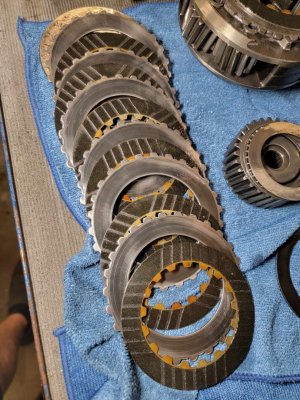 Nsx20.jpg280.1 KB · Views: 10
Nsx20.jpg280.1 KB · Views: 10
Here is the 1991 differential

Notice that the carrier assembly (planetary gear arrangement), central gear and the inside of the ring gear use straight cut teeth and yes it does have a snap ring (Honda calls it a stopper clip) and a spring plate if that is what your mechanic is referring to as a spring washer.
Now here is the later 1995+ differential design.

Notice that the carrier assembly (planetary gear arrangement), central gear and the inside of the ring gear use helical cut teeth and it does not have a snap ring and the spring plate is on the other side of the carrier assembly.
You said your car is a 1996; but, when I look at your pictures, particularly this one

that center gear and the inside of the ring gear are looking pretty straight cut to me.
You said your car is a 1996 so you should have the later differential with helical cut gears, no snap ring and the spring plate on the other side of the carrier. Unless the angle of the cut on the helical gears is incredibly low, or it is just the way that they are photographed that hides the angle or I am old and going blind it is looking to me like your center gear, planetary gears and ring gear are pretty straight cut in which case there should be a spring plate and snap ring.
So, if I am blind and those gears are helical cut then there should be no snap ring and the spring plate is on the other side of the carrier. If I am not blind and those gears are straight cut and you really do have a 1996 model year car then you have some kind of dogs breakfast differential. Perhaps somebody installed some early differential parts into the 1996 differential housing which doesn't have provision for the snap ring?

Notice that the carrier assembly (planetary gear arrangement), central gear and the inside of the ring gear use straight cut teeth and yes it does have a snap ring (Honda calls it a stopper clip) and a spring plate if that is what your mechanic is referring to as a spring washer.
Now here is the later 1995+ differential design.

Notice that the carrier assembly (planetary gear arrangement), central gear and the inside of the ring gear use helical cut teeth and it does not have a snap ring and the spring plate is on the other side of the carrier assembly.
You said your car is a 1996; but, when I look at your pictures, particularly this one

that center gear and the inside of the ring gear are looking pretty straight cut to me.
You said your car is a 1996 so you should have the later differential with helical cut gears, no snap ring and the spring plate on the other side of the carrier. Unless the angle of the cut on the helical gears is incredibly low, or it is just the way that they are photographed that hides the angle or I am old and going blind it is looking to me like your center gear, planetary gears and ring gear are pretty straight cut in which case there should be a spring plate and snap ring.
So, if I am blind and those gears are helical cut then there should be no snap ring and the spring plate is on the other side of the carrier. If I am not blind and those gears are straight cut and you really do have a 1996 model year car then you have some kind of dogs breakfast differential. Perhaps somebody installed some early differential parts into the 1996 differential housing which doesn't have provision for the snap ring?
Last edited:
- Joined
- 26 March 2023
- Messages
- 80
Are you thinking I have a 1991 Differential in my 1996 transmission and it's missing a snap ring?Here is the 1991 differential
View attachment 186304
Notice that the carrier assembly (planetary gear arrangement), central gear and the inside of the ring gear use straight cut teeth and yes it does have a snap ring (Honda calls it a stopper clip and a spring plate if that is what your mechanic is referring to as a spring washer.
Now here is the later 1995+ differential design.
View attachment 186305
Notice that the carrier assembly (planetary gear arrangement), central gear and the inside of the ring gear use helical cut teeth and it does not have a snap ring and the spring plate is on the other side of the carrier assembly.
You said your car is a 1995; but, when I look at your pictures, particularly this one
View attachment 186306
That center gear and the inside of the ring gear are looking pretty straight cut to me.
Well, that depends on whether those gear teeth are really straight cut or whether my eyes are bad. If they are straight then something is amiss. You might be able to transplant a 'complete' 1991 differential into the transaxle housing of a 1996 in which case you should have a snap ring. However, if somebody did the dogs breakfast thing and attempted to install the 1991 guts into the 1996 differential housing then the housing may not have the groove for the snap ring - hence no snap ring.
I have never had to be inside my transaxle so I have no idea about the mix and match ability of parts from different years. Because of the design change my gut reaction is that the internal parts should not be mix and match. Get your mechanic to confirm whether the gears are straight cut (1991 - 1994) or helical cut (1995+). With the diagrams your mechanic may be able to figure out whether you have an all 1991 style or all 1995+ style or some bodge job mash up. Once you have determined what you have you can make a plan on how to go forward.
I have never had to be inside my transaxle so I have no idea about the mix and match ability of parts from different years. Because of the design change my gut reaction is that the internal parts should not be mix and match. Get your mechanic to confirm whether the gears are straight cut (1991 - 1994) or helical cut (1995+). With the diagrams your mechanic may be able to figure out whether you have an all 1991 style or all 1995+ style or some bodge job mash up. Once you have determined what you have you can make a plan on how to go forward.
- Joined
- 26 March 2023
- Messages
- 80
Affirmative, I really appreciate the follow up. This is crushing but I feel like we are on the home stretch of final diagnosis which is almost certainly "get a new differential and be done".Well, that depends on whether those gear teeth are really straight cut or whether my eyes are bad. If they are straight then something is amiss. You might be able to transplant a 'complete' 1991 differential into the transaxle housing of a 1996 in which case you should have a snap ring. However, if somebody did the dogs breakfast thing and attempted to install the 1991 guts into the 1996 differential housing then the housing may not have the groove for the snap ring - hence no snap ring.
I have never had to be inside my transaxle so I have no idea about the mix and match ability of parts from different years. Because of the design change my gut reaction is that the internal parts should not be mix and match. Get your mechanic to confirm whether the gears are straight cut (1991 - 1994) or helical cut (1995+). With the diagrams your mechanic may be able to figure out whether you have an all 1991 style or all 1995+ style or some bodge job mash up. Once you have determined what you have you can make a plan on how to go forward.
If you're interested I'll post up more as I find out, if anything for the internet search history.
Definitely follow up. If the cause is not a mismatch of components it would be interesting to know what the problem is.
- Joined
- 26 March 2023
- Messages
- 80
So verified this morning the gear is helical so mismatch may not be what is happening here, going to clean the whole transmission since nothing looks super amiss now the gearset looks right, reassemble and fill with Honda MTF and see if that helps....stay tuned.Definitely follow up. If the cause is not a mismatch of components it would be interesting to know what the problem is.
Since your mechanic asked about the absence of the snap ring and spring washer it sounds like they may not be familiar with the later differential design. Make sure that they have the later service manual because the assembly and set-up of the two differentials is different. The 91-94 differential does not have that 65 mm adjustment shim that is adjacent to the center gear and the torque pre set shim is in a different location.
On the 1995+ design the preset torque is set by the 112 mm adjustment shim which is on the opposite side of the carrier. The 1995+ design also has a 112 mm shim where the 1991 torque preset adjustment shim is located; but, it is not the adjustment shim. So the 1995+ design has two separate shims that require adjustment and the torque preset values are different. If someone uses their knowledge of the 1991 differential to set up the 1995+ differential things will go badly.
Also, if you can, see if you can find a service manual for the 1995/1996 cars. The fundamental design of the differential did not change; but, I seem to recall that there were some detail changes in the later differential and I don't know when exactly they occurred. A 1997+ service manual may not be exactly correct. The old Prime NSX Wiki had a changes by year page; but, that has disappeared so I can't advise as to when the change happened or whether I am just imagining things.
On the 1995+ design the preset torque is set by the 112 mm adjustment shim which is on the opposite side of the carrier. The 1995+ design also has a 112 mm shim where the 1991 torque preset adjustment shim is located; but, it is not the adjustment shim. So the 1995+ design has two separate shims that require adjustment and the torque preset values are different. If someone uses their knowledge of the 1991 differential to set up the 1995+ differential things will go badly.
Also, if you can, see if you can find a service manual for the 1995/1996 cars. The fundamental design of the differential did not change; but, I seem to recall that there were some detail changes in the later differential and I don't know when exactly they occurred. A 1997+ service manual may not be exactly correct. The old Prime NSX Wiki had a changes by year page; but, that has disappeared so I can't advise as to when the change happened or whether I am just imagining things.
- Joined
- 26 March 2023
- Messages
- 80
Update, cleaned and reassembled....still a noisy boi. Any additional thoughts?
View attachment 1000001680.mp4
View attachment 1000001680.mp4
Sounds fine. ;-)
I can't believe it doesn't make any noise while running on the lift. It sounds like something rubbing or contacting while spinning.
I can't believe it doesn't make any noise while running on the lift. It sounds like something rubbing or contacting while spinning.
- Joined
- 26 March 2023
- Messages
- 80
I know I'm so sad right nowSounds fine. ;-)
I can't believe it doesn't make any noise while running on the lift. It sounds like something rubbing or contacting while spinning.
I listened to the video over and over and it looks like the speed of the noise is faster than the speed of the wheels. You have to get the car on the lift with someone inside and run it with the clutch in and out, wheels rotating, etc. Someone underneath with a stethoscope and you should pin point the noise. Unless I misread your previous posts it doesn't sound like you've done this.
- Joined
- 26 March 2023
- Messages
- 80
The issue isn't present on the lift unfortunately, it only shows up w a load on the vehicle.I listened to the video over and over and it looks like the speed of the noise is faster than the speed of the wheels. You have to get the car on the lift with someone inside and run it with the clutch in and out, wheels rotating, etc. Someone underneath with a stethoscope and you should pin point the noise. Unless I misread your previous posts it doesn't sound like you've done this.
I feel like we're dancing around the info. Can you answer yes or no to these questions...
1) when the car was on the lift was the engine run and clutch engaged and disengaged?
2) were gears shifted?
3) were the brakes applied to create drag?
4) was someone under the car listening with a stethoscope or listening device?
If that was all done and it truly can't be heard without a load you may want to find a mechanic with a Bluetooth remote stethoscope device that can place sensors on different parts to locate the noise. I've never heard a noise that loud that is so hard to find.
1) when the car was on the lift was the engine run and clutch engaged and disengaged?
2) were gears shifted?
3) were the brakes applied to create drag?
4) was someone under the car listening with a stethoscope or listening device?
If that was all done and it truly can't be heard without a load you may want to find a mechanic with a Bluetooth remote stethoscope device that can place sensors on different parts to locate the noise. I've never heard a noise that loud that is so hard to find.
- Joined
- 26 March 2023
- Messages
- 80
Confirmed todayI feel like we're dancing around the info. Can you answer yes or no to these questions...
1) when the car was on the lift was the engine run and clutch engaged and disengaged?
2) were gears shifted?
3) were the brakes applied to create drag?
4) was someone under the car listening with a stethoscope or listening device?
If that was all done and it truly can't be heard without a load you may want to find a mechanic with a Bluetooth remote stethoscope device that can place sensors on different parts to locate the noise. I've never heard a noise that loud that is so hard to find.
1. Yes
2. Yes
3. Yes
4. Yes
So after talking to Dave at CRF for almost an hour, he gave some insight based on what he saw.
*Check the axles to make sure grease isn't drying out. *****Boots peeled back, grease ok***
*Send it....kind of and carefully. Drive it at 50-80 mph, get the oil pump in the transmission really working and build up pressure. Drain, refill, send it again. Repeat as needed until something noticeable happens (positive or negative). Reasoning, will all but confirm differential.
Here's where it gets interesting. Mechanic performed the "send it" steps above, first try it got a little better, second try seemingly even better. Every drain/fill is becoming less and less sparkly, we are on the right track! Symptoms disappear, I have video proof.
This morning (2 days parked now at the shop) start up car, immediately when backing out symptoms present again! Perform one run and a few circles, diff unsticks again and is "ok".
So, looks like the differential needs more flushes than one even thought possible...wavetrac is already en route so likely just replacing. Maybe I'll take the OEM apart and soak the discs for weeks or something.....
Putting it out there just so others know and in case anyone wants to further the discussion any more.
Attachments
I am missing what "send it" means.
I am seeing what look more like a lot of bubbles on the surface of the oil. If those are actually particles of metal then you still have an issue. Is the mechanic checking the strainer with each flush to see if particles are accumulating in the strainer? I would have presumed that the differential parts would have been washed in solvent prior to reassembly along with the oil pump and strainer assembly. I would expect any particles bedded in the clutch friction disks to have been cleared out. If so, that implies that any metallic contaminants that are showing up are freshly generated which indicates a severe wear issue.
I have never seen the inside of an NSX LSD in person. When I go back and look closely at the picture of the stack of drive plates and clutch friction disks, the drive plates look rather chewed up, like the LSD clutch has seen an awful lot of action. The Honda SM does not provide any guidance on acceptable thickness, what the plates should look like or whether surface condition is a concern. I would defer to others as to whether this is abnormal and whether the clutch drive plates and friction disks should have been changed out. The SM also does not set out any specifications for the spring plate. I guess the presumption is that if you can establish your pre set torque then all this is OK.
Since you appear committed to the wavetrac installation you should carefully examine the reast of the transmission to try and determine where the fresh metallic contaminants are coming from. My biggest concern is that you have a bearing someplace that is chewing itself to bits, although normally this would start to generate a lot of noise.
I am seeing what look more like a lot of bubbles on the surface of the oil. If those are actually particles of metal then you still have an issue. Is the mechanic checking the strainer with each flush to see if particles are accumulating in the strainer? I would have presumed that the differential parts would have been washed in solvent prior to reassembly along with the oil pump and strainer assembly. I would expect any particles bedded in the clutch friction disks to have been cleared out. If so, that implies that any metallic contaminants that are showing up are freshly generated which indicates a severe wear issue.
I have never seen the inside of an NSX LSD in person. When I go back and look closely at the picture of the stack of drive plates and clutch friction disks, the drive plates look rather chewed up, like the LSD clutch has seen an awful lot of action. The Honda SM does not provide any guidance on acceptable thickness, what the plates should look like or whether surface condition is a concern. I would defer to others as to whether this is abnormal and whether the clutch drive plates and friction disks should have been changed out. The SM also does not set out any specifications for the spring plate. I guess the presumption is that if you can establish your pre set torque then all this is OK.
Since you appear committed to the wavetrac installation you should carefully examine the reast of the transmission to try and determine where the fresh metallic contaminants are coming from. My biggest concern is that you have a bearing someplace that is chewing itself to bits, although normally this would start to generate a lot of noise.
- Joined
- 26 March 2023
- Messages
- 80
Send it essentially meant "drive it carefully up to speed regardless of noise and see if it frees up". Which it did, temporarily. He also checked the strainer and made no mention of issues there. Definitely rinsed in solvent and reassembled.I am missing what "send it" means.
I am seeing what look more like a lot of bubbles on the surface of the oil. If those are actually particles of metal then you still have an issue. Is the mechanic checking the strainer with each flush to see if particles are accumulating in the strainer? I would have presumed that the differential parts would have been washed in solvent prior to reassembly along with the oil pump and strainer assembly. I would expect any particles bedded in the clutch friction disks to have been cleared out. If so, that implies that any metallic contaminants that are showing up are freshly generated which indicates a severe wear issue.
I have never seen the inside of an NSX LSD in person. When I go back and look closely at the picture of the stack of drive plates and clutch friction disks, the drive plates look rather chewed up, like the LSD clutch has seen an awful lot of action. The Honda SM does not provide any guidance on acceptable thickness, what the plates should look like or whether surface condition is a concern. I would defer to others as to whether this is abnormal and whether the clutch drive plates and friction disks should have been changed out. The SM also does not set out any specifications for the spring plate. I guess the presumption is that if you can establish your pre set torque then all this is OK.
Since you appear committed to the wavetrac installation you should carefully examine the reast of the transmission to try and determine where the fresh metallic contaminants are coming from. My biggest concern is that you have a bearing someplace that is chewing itself to bits, although normally this would start to generate a lot of noise.
I'll absolutely bring up the very valid concern over a bearing being chewed up, he has to take it apart again anyway to install the wavetrac so I will ask him to triple check bearings for good measure (great call out on this).
Side note I'm not necessarily committed to wavetrac, but it's already ordered and on the way so instead of fiddling more and more w the OEM one I'm just going to install the wavetrac and eliminate (hopefully) this stupid issue.
I'll likely take the OEM one apart myself at home and mess with it some more, if anything for my own edification on the wear and such (which o agree some of the discs appear more worn than others in there)
As an aside this car has some.miles on it, even with length maintenance records 120k miles will catch up to any car especially performance ones.
You guys are literally the best for all the help and replies. The saga continues, I'll post updates through complete resolution.
Did you do your research on the Wavetrac? As I recall, I thought it is not exactly a drop in replacement. I thought there were some modifications required. If you are getting your Wavetrac from Cedar Ridge I expect that they should be able to give you the scoop on whether it drops in place or whether additional changes are required.
Similar threads
- Replies
- 28
- Views
- 825
- Replies
- 0
- Views
- 519
- Replies
- 8
- Views
- 2K






